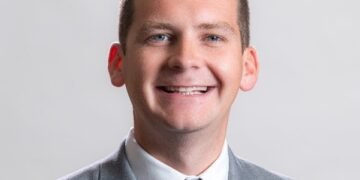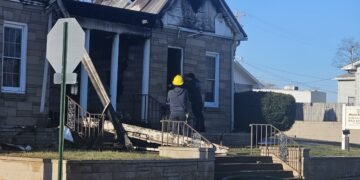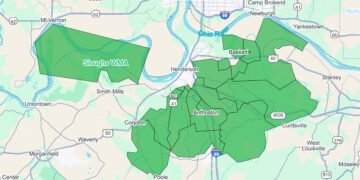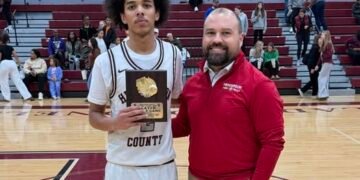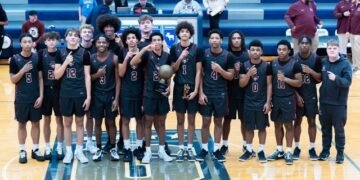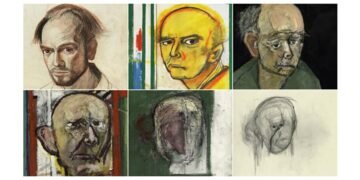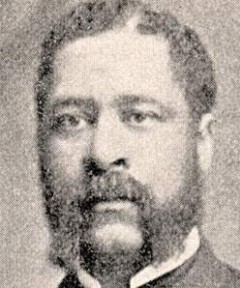Local historian’s dogged research reveals his story
About ten years ago, Donna Spencer was giving a tour of Fernwood Cemetery when she happened upon a tombstone that appeared to have been sliced in half.
Spencer, a genealogy and local history associate at the Henderson County Public Library, was working at the Henderson Depot community room at time. Part of her duties included heading tours, including those of local cemeteries.
The broken tombstone piqued her interest, and she began researching, a pursuit that ended up lasting years. She’d find one piece of the puzzle, and then leave it be for a while. Then she’d come back to it and find another piece.
She first learned the tombstone was a Civil War marker, then the deceased was in the Black infantry. Then she found the identity of the deceased: Paul Horace Kennedy.
Knowing that, she began to put together Kennedy’s story, which again happened slowly and via many research methods and records from the 19th and early 20th centuries.
And after many years, she felt confident about the research of Kennedy’s life story. He was born enslaved in Elizabethtown, ran away twice before enlisting in the United States Colored Infantry for duty in the Civil War, and later lived in Henderson, where he was a community leader.
But still, she couldn’t find any of Kennedy’s still-living ancestors.
“It was years,” Spencer said.
Finally, three years ago, Spencer posted a message on the Kennedy family page on ancestry.com. She got an answer from Kennedy’s great-great-granddaughter affirming that she was kin. They’ve been corresponding since.
Meanwhile, the tombstone needed to be fixed. Spencer called around looking for people to reconnect the two slabs but couldn’t find anyone willing. Finally, Mark Vanderpool, the husband of HCPL Genealogy and Local History department assistant Kristy Vanderpool, told Spencer he would give it a try.
The Vanderpools hauled it off to Mark’s workshop and he was able to attach the two pieces together and re-set the monument to military height, Spencer said.
Now, with the monument back in its spot in Fernwood Cemetery, library staff and some of Kennedy’s descendants will rededicate the tombstone. The ceremony will be 11 a.m. on June 17 in Section 10 of the Fernwood Cemetery. A reception will follow at 2 p.m. at HCPL.
This is also the Saturday of the W.C. Handy Blues and Barbecue Festival. An interesting tidbit Spencer found in her research was that Handy and Kennedy were friends.
She writes that after Handy moved away from Henderson, he often would stay with Kennedy when he came back to visit.
Spencer’s research about Kennedy is on display in the Genealogy Department of the library through the summer.
***
A brief account of Kennedy’s life based on Spencer’s research follows.
On an 1850 census report that documented the slaves of Alfred Horace Kennedy, among others, a two-year-old male mulatto was listed. That boy was Paul Horace Kennedy, according to Spencer.
Paul Horace Kennedy’s father was his slaveholder. His mother, Carolina, was an enslaved woman. Spencer believes that a 30-year-old woman listed on the 1850 census report is Carolina.
Kennedy was born Sept. 1, 1848, in Elizabethtown in Hardin County. He was a natural-born musician and learned to play multiple instruments. This would serve him well in later life.
According to Spencer’s research, he also “was seized with a desire to learn to read.” A young white friend helped Paul Horace begin a rudimentary education.
It’s probably impossible with the limited number of records available from the 1850s to piece together all of Kennedy’s early life. But Spencer’s research reveals that the younger Kennedy ran away twice in search of freedom, finding success the second time when he was 15.
When he was 13 years old, U.S. Federal troops came to Hardin County. This was 1861. The young Kennedy somehow met the troops and told them he wanted to be free.
The troops hid him in their wagon and took him to their camp, but soon he was returned to his father. In her research, Spencer writes that his treatment upon return is unknown.
Two years later in 1863, Paul Horace walked 55 miles from Hardin County to Louisville, a journey that may have taken him two days or more, writes Spencer.
He enlisted in the 109th Regiment of the United States Colored Infantry, an all-Black regiment of the Union Army formed in 1863. Kennedy was a bugler in the war but played many instruments in later life.
He served through the end of the war, even witnessing the surrender of Robert E. Lee at Appomattox Courthouse, Virginia, on April 9, 1865.
After the war, Kennedy began his studies and then graduated from the Nashville Normal and Theological Institute. Later, he earned a Doctor of Divinity degree.
His ministry work took him to several churches in the South before he first arrived in Henderson a widower with two young daughters in 1881. He served as pastor at First Missionary Baptist Church until Jan. 1, 1884.
Kennedy eventually remarried and had five more children. He held high-ranking jobs that sent him away from Henderson, but he always returned.
He also wrote, edited and published reference books about Baptists, was the editor of the Kentucky Missionary Visitor and wrote and published the Baptist Directory and Yearbook. He was also featured in other books that he did not write.
Paul Horace Kennedy died on April 9, 1921.



